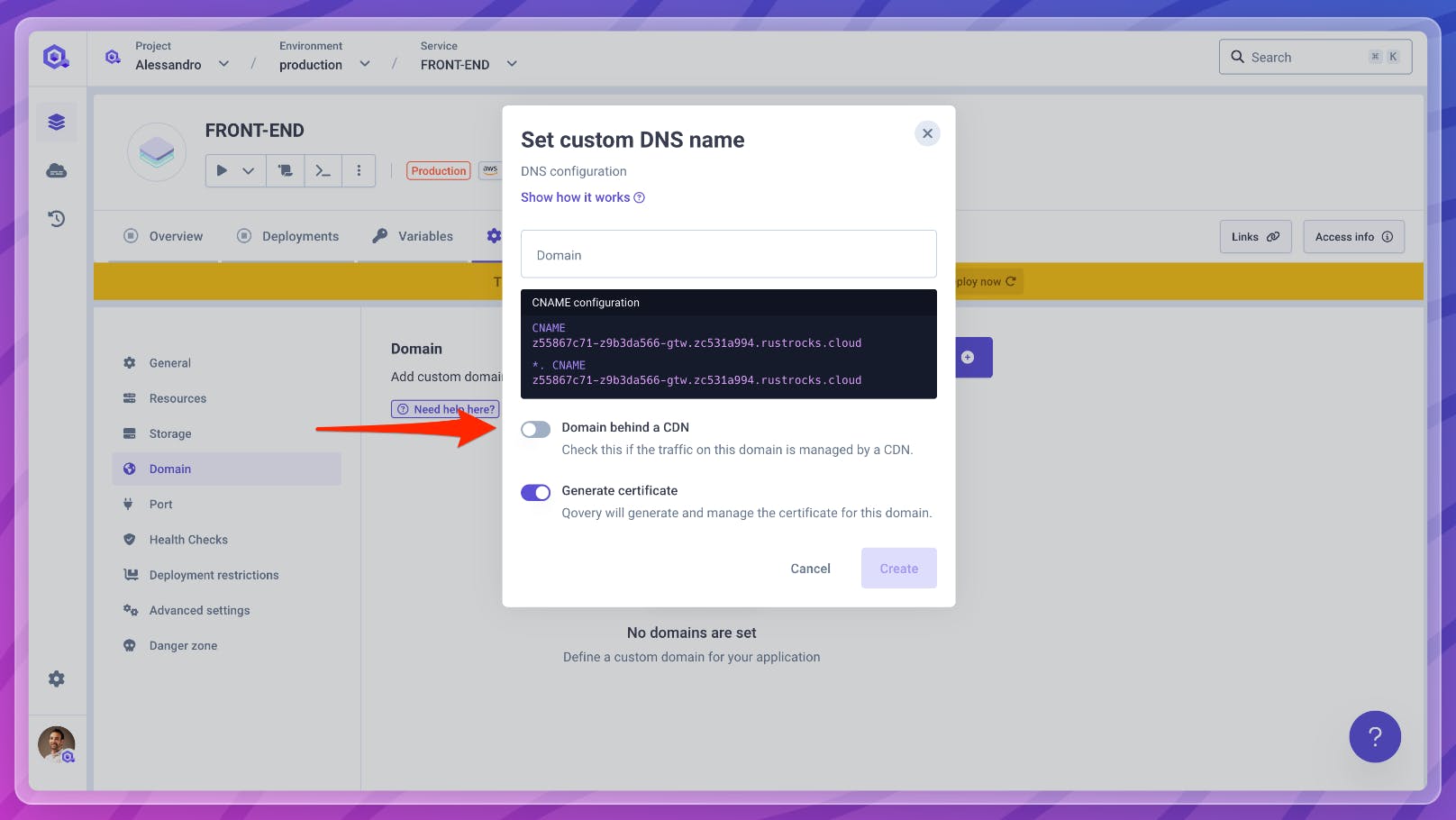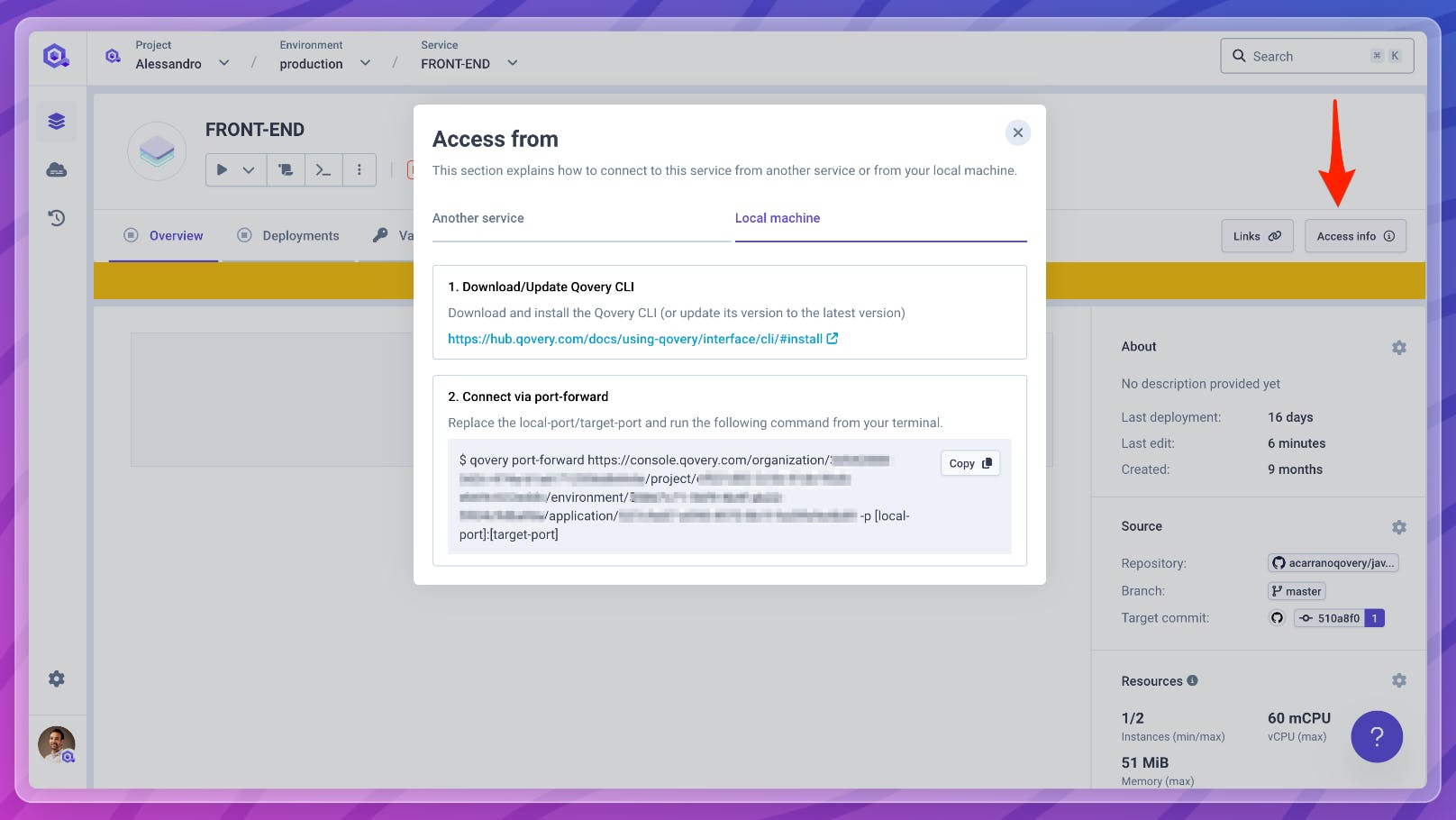Improved setup for custom domain with CDN, new access info section, qovery demo cluster improvements, deploy multiple services via the CLI ...
Hello Team,
Part of our team is already enjoying some well-deserved rest but we are still delivering cool stuff in production.
Have a look at what we have delivered over the past 2 weeks:
#Improved setup for custom domains behind a CDN
We have added a new option to the domain setup of your application to take into account setup with a CDN. When your traffic is served via a CDN, we cannot verify the setup of the CNAME redirection to our domain and most likely we can't even generate a certificate for you.
Before you had to manually change an advanced setting to disable the domain verification step but now it's directly integrated into the custom domain configuration.

When activated, we will disable the automatic checks running at the end of the deployment to verify the domain configuration since your CDN manages everything.
#More information on how to access your services
A new button called "Access info" appeared in your service overview page. It allows you to get more information on how to interconnect services (via the BUILT_IN environment variables) and as well on how to connect from your local machine (via our port-forward feature).

The information was already in our public documentation but we wanted to make it more visible for our users.
#"qovery demo up" CLI command improvements
Making this Qovery CLI command work on every setup is a real challenge, multiple dependencies are necessary to properly spawn a K3s cluster on your machine and install Qovery on it (plus you have to manage the differences between Windows, MacOs etc..).
We have improved a few aspects of the installation process with:
- additional dependencies checks, making sure you have all the required software already installed (like Dockerdesktop) and that you have already an Organization on Qovery
- reduced the Qovery application image size, making it faster to download and install Qovery on your local machine
If you haven't tried our demo cluster feature yet, look at our blog article and give it a try!
#Deploy multiple services at once with "qovery environment deploy" CLI command
Deploying multiple services at the same time has been at the heart of the Qovery product. We have improved the CLI to let you deploy multiple services with just one single command via the command:
qovery environment deploy --applications <applicaiton_list> --containers <containers_list> --cronjob <cronjob_list> ...This triggers one single deployment command instead of doing the deployment by service type, complexifying your CI pipeline
Example:
qovery environment deploy --applications "Backend:ad933d741d86205dfd3291d5685060167b85f910,API Gateway:5a44b4d084155ecb2ae7508e3efd2575c27ea3b8" --containers "Dashboard" --lifecycles "DB Seed Script:a2e888e9c3896b09f4b01655d1585c28f019bb0c"Check our CLI documentation and try it on your machine or CI.
#Minor updates:
- Added intro page for Lifecycle jobs: We have added an intro page when creating a new lifecycle job to explain how they work and the use cases they cover.
- More events tracked in the audit logs: we are now tracking the clone, shell connection, port-forward events.
- Added support of API tokens in Qovery websockets: you can now use the Qovery API tokens to connect to the websockets. This can be useful if you have a token API and you want to use the `qovery shell` command with it.
These updates are aimed at improving usability, performance, and flexibility, empowering you to deploy with confidence and efficiency.
For the latest news and upcoming features, remember to check out changelog.qovery.com.
Happy Deploying!
The Qovery Team 🚀

